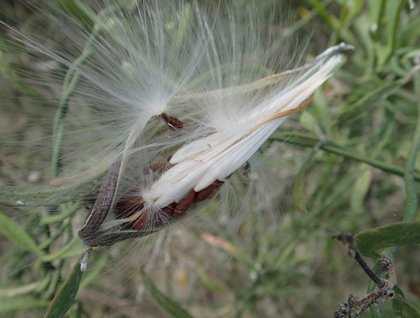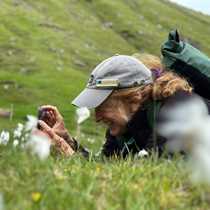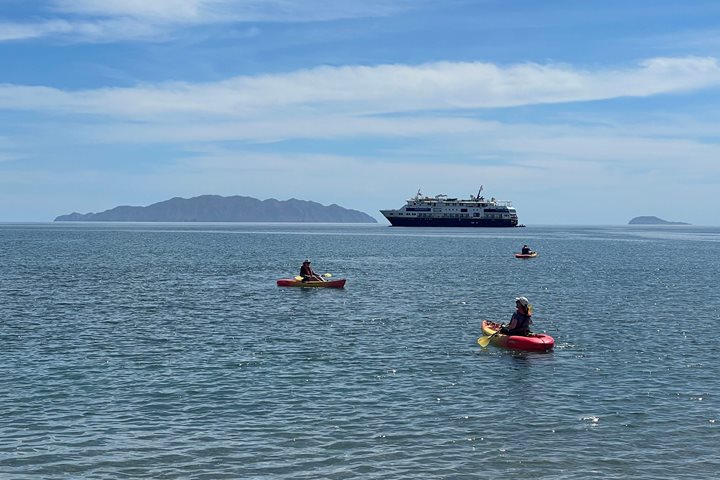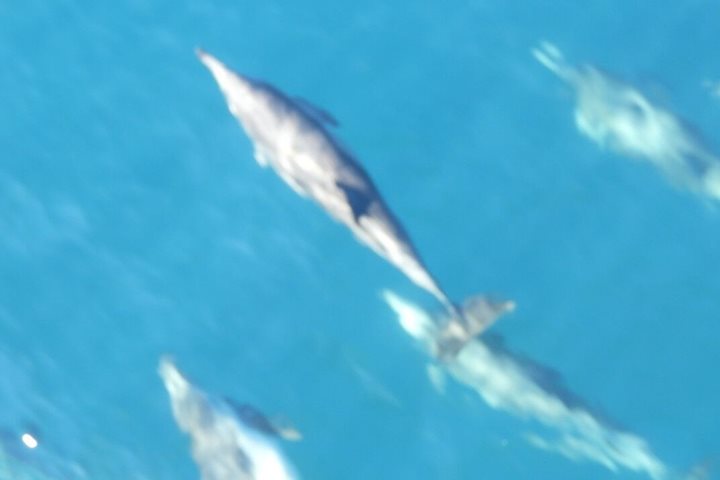Sometimes it takes a while to get to an “out of the way” place. We all spent a good part of the day yesterday in travel mode, using a variety of vehicles to get here to Magdalena Bay. It was well worth the effort. Today we start our explorations of Baja California with a landing on Isla Magdalena. Here, we wiggle our winter-white toes into the soft sands and breath a sign of relief.
The first intricacies in the sand to grab our attention were the crab starbursts. These flat, one-dimensional fireworks were the result of feeding activity by hundreds of crabs. When the sand flats were freshly flooded by the tide, all sorts of miniscule organisms were washed in, and the crabs had been working those sands through their mouths, gleaning the food items and leaving lines of small sand balls in their path.
The tides had also deposited a number of what appear to be skinny green bowling pins. These were the propagules of the red mangrove. Slender seedlings already germinated were looking for a nice place in the muck to extend their roots. The remains of a seahorse were found high on shore as well. We are in Mexico, would the proper term be caballo del mar? The dimpled texture of the dunes told us that it must have rained in the last 24 hours. A number of desert adapted plants were filling their succulent jelly bean-like leaves with this ephemeral moisture. Flowers of sand verbena, evening primrose and milkweed swayed gently in the morning breeze.
We walked across the island and came across an unusual view when we reached the Pacific side. The surf breaking on the beach looked like a churn in Willie Wonka’s chocolate factory. An algae, thought to be Ectocarpus siliculosus, was growing quite well offshore and was washing up on the beach, creating a cushy mat and turning the breaking waves dark brown.
Upon our return to the ship, we began our navigation north, along the east side of Isla Magdalena. This 50 plus mile long island is one of two barrier islands creating the tranquil lagoon, Magdalena Bay, sought by gray whales for birthing as well as breeding activities. At this time of year, it is more of a nursery. The females that were receptive to breeding, along with males carrying an attitude of intent, have left for their northern feeding grounds. The remaining gray whales are cow/calf pairs, with the nursing mothers focused on bulking up and exercising their young calves in preparation for migration. As we wound through the mangrove channels of Canal de Soledad, we came upon several pairs of gray whales. The calves were swimming in tight formation alongside their moms.
We admired the young whales cavorting activities and look forward to tomorrow, when we will have opportunities to observe these maritime travelers from a water level view.







